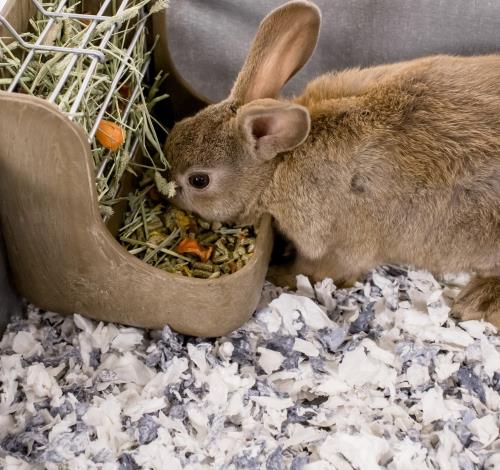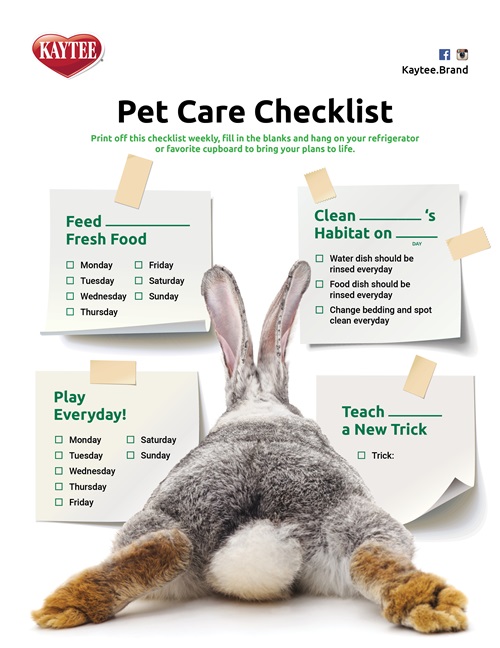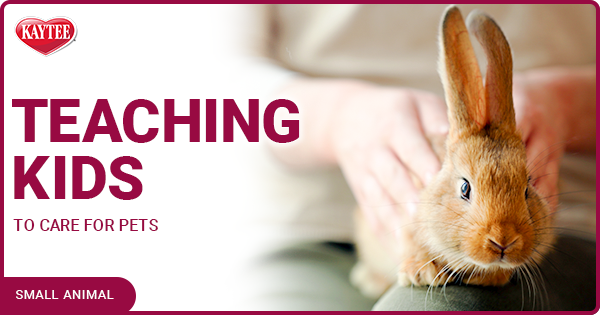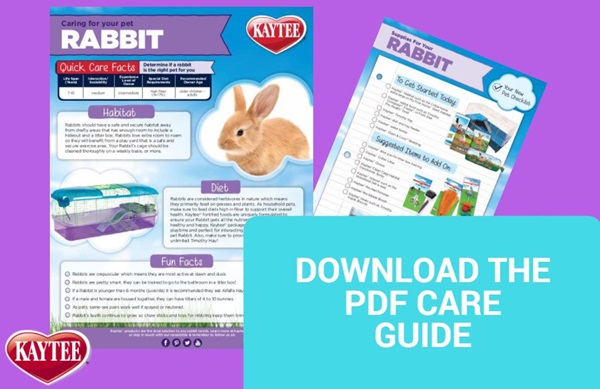Teaching Kids to Care for Small Pets
Understanding Animal Dietary Needs
At first, your toddler may want to offer a slice of pizza or crackers from snack time to his hamster. We love the concern this shows for the pet, but now it's your turn to teach which foods are appropriate for the small animal. Feeding is a very important part of the relationship with your animal. A proper diet can ensure a happy and safe pet.Start by showing the child the packages of foods for the pet. For example, if it's a hamster, a pellet/seed mix, hamster treats, and a package of chew sticks could be kept in a small tote so the child learns that's where the pet's food is stored. Then point out where the food bowl is in the pet's habitat so the child knows where to pour the food. For older children who can read, create a list to keep with the food. Be sure to include fresh produce treats on the list that need to be retrieved from the refrigerator. Also, include how often the pet should be fed and how much food they need each day. This detailed information sets your child up for success!
Finally, small animals get thirsty just like us. Let your child know all pets need access to clean water at all times. Make it part of your daily routine to check the pet's water bottle for fullness and leaks. Then, show how to rinse and refill it with fresh, cool water so the pet can enjoy a satisfying drink.
Learning About Pet Habitats
Every pet needs a place to call home, within your home! This keeps him safe from other pets, small children, and household hazards. Just like humans, keeping a clean and safe home environment will help your pet feel calm and happy.
First, explain to your child the pet will live in his own habitat. For example, a rabbit's home needs to be large enough for roaming, a litter box, and a hiding place in addition to his food bowl, a rack filled with Timothy hay, and a water dish or bottle. If your rabbit is not litter trained, the habitat will need bedding to keep the pet extra cozy and absorb waste.

Here are some steps you can encourage your child to take when caring for their animals' home:
• Establish a regular feeding and cleaning time for the pet's habitat. Maybe it's right after school or before dinner time.
• Require a daily checkmark (use colorful pens!) on the wall calendar for the child to complete. This way both you and the child can see at a glance that the pet was cared for each day.
• Pair care time with playtime. After the pet has a freshened litter box or food bowl, the child can bond over a few minutes of play using the pet's running ball or in a homemade obstacle course.
Download this checklist to create healthy routines with the whole family:

Socializing The Pet Matters, Too
Remind your child how they felt on the first day of school or daycare. They may have been a bit nervous or unsure of how things would go. Likely, their pet is feeling this way too during their first week home. To make the pet welcomed and loved, work to actively socialize the critter with the family. With the right type of gentle interaction for just a few minutes each day, your animal will learn to be more social and your child will bond more securely with the pet.Teaching the animal a trick can be a great activity for both the child and the animal. Then, let the child show the cool skill off to the whole family. And, have the camera ready for a few snaps! Or, head outside for some fun in the fresh air (tips here)! Too hot out? Try one of these cool indoor playtime activities to socialize your pet. Or, snuggle up with a children's book and the pet on your child's lap. Let your little one read to the pet to create a beautiful bond. Pets are family members. By making the health and happiness of the small animals in your home a priority, your kids will quickly learn the best ways to care for their furry friends from your examples. You got this!
Sources:
Shackleford Vet Clinic, Teaching Proper Pet Care is Good for Both Your
Child and Pet
Ross University School of Veterinary Medicine, Guide for Taking Care of
Animals
The British Columbia Society for the Prevention of Cruelty to Animals
(BC SPCA), Pet Care for Kids

